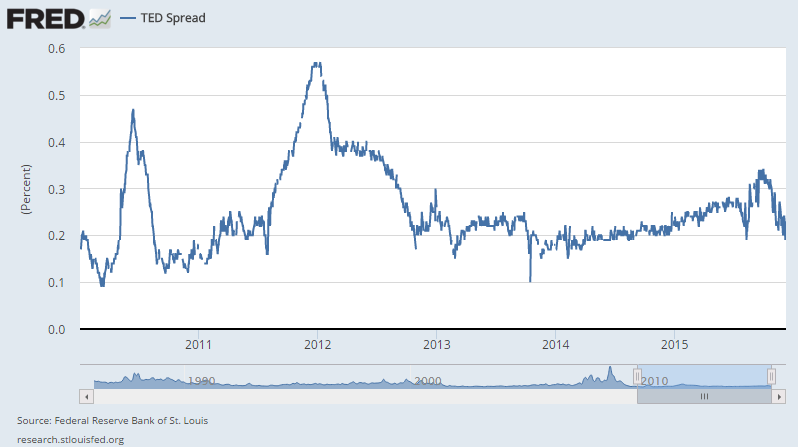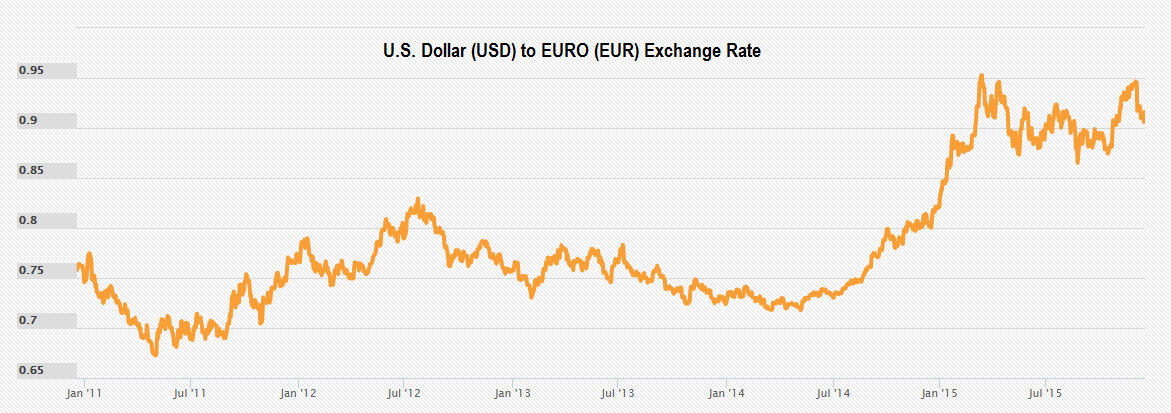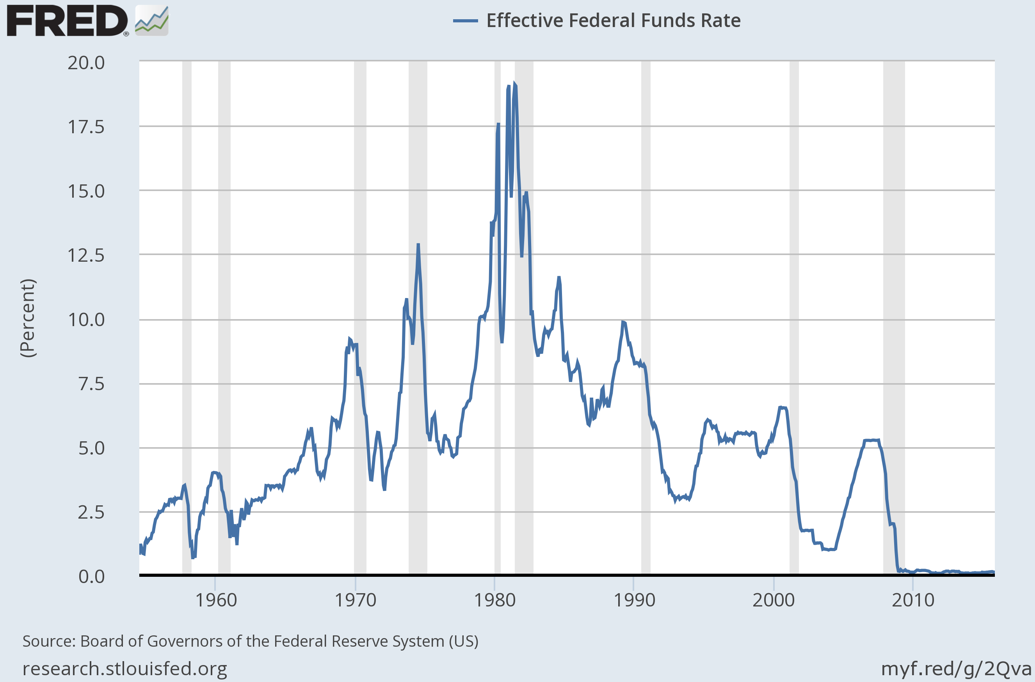Post by The Big Daddy C-Master on Dec 24, 2015 14:46:17 GMT -5
www.investopedia.com/articles/investing/122215/4-indicators-screaming-recession-2016.asp
Warning signs have started to emerge that point to a potentially dismal 2016 for the U.S. economy. A combination of a slowdown in global shipping, a gap between risk-free assets and corporate credit and a strengthening dollar – enhanced by the Fed’s rate hike decision – all are giant red flags. Below are four indicators that investors should follow closely in the first quarter of 2016.
The Baltic Dry Index: The advent of the shipping container revolutionized global trade and has created a relatively inexpensive means of transporting goods. Consequently, contemporary trade in the global economy relies heavily on ships, which makes the global shipping business a barometer for global economic growth.
The Baltic Dry Index, which measures changes in the cost to transport a wide variety of goods across different sized merchant ships, can be a leading indicator of future economic growth because it provides investors insight into global supply and demand trends. The index fell to its lowest level in 30 years during the fourth quarter of 2015 and may be foreshadowing another global economic recession in the near future.

The TED Spread: A rise in this financial metric may spell trouble, as evidenced by its gradual increase in the year preceding the financial credit crisis in 2008. The TED Spread measures the difference between the interest rates on interbank loans (risky assets) and on short-term U.S. government debt (risk-free assets), and represents a key indicator for underlying market risk. This indicator has been steadily increasing since Q4 2013, and touched a level in September 2015 that it has not seen since the summer of 2012. A potential flight to quality as indicated by an increase in the TED Spread may highlight uncertainty in investors and also foreshadow a coming recession.

Exchange Rate: The U.S. dollar has steadily risen in value ever since the 2008 financial credit crisis. A strong greenback comes with a mixed bag of pros and cons, but it may be a net negative for the economy during times of tepid growth. American consumers that spend their dollars abroad will generally benefit from a stronger dollar, but dollar-sensitive American companies and industries that are involved in global markets for the bulk of their sales may be negatively impacted.
In addition to potentially pricing out U.S. companies in global markets to lower-cost international competitors, a strong dollar has the potential to compromise the employment of certain export-related industries as well. A decrease in demand for U.S. tourism, and a general decline of foreign investment into the U.S. are also negative consequences of a stronger domestic currency, both of which can negatively affect the economy and contribute to recession.

The Federal Funds Rate: Janet Yellen and the League of Extraordinary Federal Open Market Committee (“FOMC”) members have increased the Federal Funds Rate for the first time in nearly a decade, and are expected to gradually increase the rate over the next several years. While rising rates can indicate a healthy economy, increasing the rate at a time of modest GDP growth in tandem with a strong dollar is a potentially lethal combination for the economy.
Those who hold bonds or bond-funds with longer maturities will suffer in this type of environment, and rising rates further hurts domestic companies whose non-U.S. sales are already feeling a pinch from the strong dollar. Finally, a higher interest rate can have a negative impact on the economy as consumers who hold adjustable rate loans, such as variable home or auto loans, will have less discretionary income to purchase goods and services that contribute to U.S. GDP growth.

The Bottom Line
After announcing an end to its historical bond-buying program in 2014, the Fed promised to keep its benchmark interest rate low for a “considerable time” to buoy the economy. The FOMC’s decision to increase their benchmark interest rate in December marked the first increase in nearly a decade, and most likely marks the start of a continued gradual increase in the coming years. However, embarking on such a program at a time when warning signs for the economy are flashing may be the straw that breaks the camel’s back, and lead the U.S. into another recession.
Do You Have Access to Investment Advice?
Everybody deserves access to unbiased investment advice. That's why FutureAdvisor has made their investment algorithms available for public use. You can link your investments to their algorithms and receive a personalized, step by step action plan to help improve your portfolio. Their advice is 100% free - always. Set up your free account today - it only takes 2 minutes to get started.
Warning signs have started to emerge that point to a potentially dismal 2016 for the U.S. economy. A combination of a slowdown in global shipping, a gap between risk-free assets and corporate credit and a strengthening dollar – enhanced by the Fed’s rate hike decision – all are giant red flags. Below are four indicators that investors should follow closely in the first quarter of 2016.
The Baltic Dry Index: The advent of the shipping container revolutionized global trade and has created a relatively inexpensive means of transporting goods. Consequently, contemporary trade in the global economy relies heavily on ships, which makes the global shipping business a barometer for global economic growth.
The Baltic Dry Index, which measures changes in the cost to transport a wide variety of goods across different sized merchant ships, can be a leading indicator of future economic growth because it provides investors insight into global supply and demand trends. The index fell to its lowest level in 30 years during the fourth quarter of 2015 and may be foreshadowing another global economic recession in the near future.

The TED Spread: A rise in this financial metric may spell trouble, as evidenced by its gradual increase in the year preceding the financial credit crisis in 2008. The TED Spread measures the difference between the interest rates on interbank loans (risky assets) and on short-term U.S. government debt (risk-free assets), and represents a key indicator for underlying market risk. This indicator has been steadily increasing since Q4 2013, and touched a level in September 2015 that it has not seen since the summer of 2012. A potential flight to quality as indicated by an increase in the TED Spread may highlight uncertainty in investors and also foreshadow a coming recession.

Exchange Rate: The U.S. dollar has steadily risen in value ever since the 2008 financial credit crisis. A strong greenback comes with a mixed bag of pros and cons, but it may be a net negative for the economy during times of tepid growth. American consumers that spend their dollars abroad will generally benefit from a stronger dollar, but dollar-sensitive American companies and industries that are involved in global markets for the bulk of their sales may be negatively impacted.
In addition to potentially pricing out U.S. companies in global markets to lower-cost international competitors, a strong dollar has the potential to compromise the employment of certain export-related industries as well. A decrease in demand for U.S. tourism, and a general decline of foreign investment into the U.S. are also negative consequences of a stronger domestic currency, both of which can negatively affect the economy and contribute to recession.

The Federal Funds Rate: Janet Yellen and the League of Extraordinary Federal Open Market Committee (“FOMC”) members have increased the Federal Funds Rate for the first time in nearly a decade, and are expected to gradually increase the rate over the next several years. While rising rates can indicate a healthy economy, increasing the rate at a time of modest GDP growth in tandem with a strong dollar is a potentially lethal combination for the economy.
Those who hold bonds or bond-funds with longer maturities will suffer in this type of environment, and rising rates further hurts domestic companies whose non-U.S. sales are already feeling a pinch from the strong dollar. Finally, a higher interest rate can have a negative impact on the economy as consumers who hold adjustable rate loans, such as variable home or auto loans, will have less discretionary income to purchase goods and services that contribute to U.S. GDP growth.

The Bottom Line
After announcing an end to its historical bond-buying program in 2014, the Fed promised to keep its benchmark interest rate low for a “considerable time” to buoy the economy. The FOMC’s decision to increase their benchmark interest rate in December marked the first increase in nearly a decade, and most likely marks the start of a continued gradual increase in the coming years. However, embarking on such a program at a time when warning signs for the economy are flashing may be the straw that breaks the camel’s back, and lead the U.S. into another recession.
Do You Have Access to Investment Advice?
Everybody deserves access to unbiased investment advice. That's why FutureAdvisor has made their investment algorithms available for public use. You can link your investments to their algorithms and receive a personalized, step by step action plan to help improve your portfolio. Their advice is 100% free - always. Set up your free account today - it only takes 2 minutes to get started.





